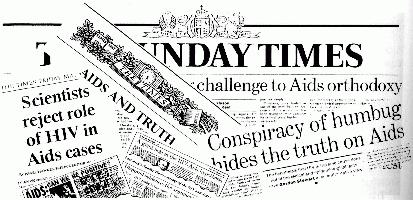
AIDS dossier.
In collaboration with Alfredo Embid Fonfria, Coordinator of la Asociación
de Medicinas Complementarias.
The most important thing is never to stop questioning.

True scientific vocation means to search for knowledge without setting previous conditions or dogmas. Galileo observed the planets and stars, and demonstrated that the Earth moved around the Sun. In spite of this, he was accused of heresy and had to retract. Nevertheless, his view was accepted in the long run ...
Furthermore, it is difficult to leave science to the mercy of the market - it must be encouraged by society. Normally, one must invest in various lines of research, of which perhaps only one will prove fruitful, before making a discovery. And we have the example of Alexander Flemming who discovered penicillin's antibiotic effects by chance.
While humanistic science is difficult to achieve under market conditions, it is even more difficult when confronted by business interests which revolve around long patented inventions. This is the reason why renewable energy sources are not used in urban and rural transport, and why we still depend on gas and petrol motors, the cause of so many wars.
When the market is ruled by corruption and irresponsibility, it becomes even more difficult to achieve a humanist science. Certain powers promote research for mass alienation and population control (new systems of communication and more modern televisions), but they do not do so for those devices that would help people to be more free.
In the following story, we will take part in the adventure of some critical scientists who want to practice their vocation in the ambit of medical and biological research.
They do not just try to reconsider a scientific theory that has been arbitrarily imposed, but they also try to defend equanimity, responsibility and rigour in their profession.
We will also see these scientists coming up against certain irresponsible forces during their work, and how these powers lobby in all ambits (the political, the economic, the media) to submit humanity to disinformation and the terror that is fear of AIDS.
The old Burroughs-Wellcome was set up by two pharmacists in 1880, Henry Wellcome and Silas Burroughs.
Around the year 1936, the Wellcome Trust was founded. The Wellcome and the Rockefeller Trusts began their association.
The legal business of the wellcome Trust was done by Sullivan & Cromwell in the 30's, which was one of the most influential in New York, and one of the pillars of the Rockefeller Trust, as shown by the fact that two of their lawyers, John Foster Dulles and Allen Dulles became Secretary of State and director of the C.I.A. respectively during the cold war.
During the 50's, their technical services overlapped. Later on, the Wellcome Trust took part in the London university set up by the Rockefeller. Its influence began to increase within English health education.
David Rockefeller founded the Trilateral Commission in the 70's, made up of individuals from industry, academia and politicians, all experts in international politics.
The core of the trilateral Commission is made up of the directors of a group of multinationals with the intention of maintaining their economic power worldwide (plutocracy). The Wellcome Trust Corporation stands high among these multinationals.
Until 1986, Wellcome Trust held 100% of Wellcome Inc., who produce medicines. They sold 25% of their shares, and changed its name to Wellcome Foundation.
From that time on, Wellcome changed direction noticeably, moving from a more ethical and academic spirit to a more definitely mercenary one.
Having completely failed as a cancer treatment, Wellcome received permission to market AZT for the treatment of AIDS sufferers under the name of Retrovir.
On June 24, 1988, in an article entitled «The Amazing AIDS Scam», published by «New Statesman and Society», Duncan Campbell wrote that many clinical results were hidden behind the commercial results. He also stated that AZT's cost had been multiplied by five to ten times, with the monthly cost of treating an AIDS patient being some 100.000 pts.
Wellcome Trust reduced its holding in Wellcome Foundation to 40% in July 1992, making 2,3 billion pounds Sterling on the deal.
Civil servants in the hunt for the virus: the NIH, the CDC and the EIS.
In the USA, official scientific research is controlled by the National Institute for Health, the NIH, and the Public Health Service, by way of the Centres for Disease Control, CDC. Both institutions are run by virologists.
The NIH was set up in 1887 as the Medical Laboratory, and belonged to the US Navy. The first specialised section was set up in the 30's: the National Cancer Institute.
In 1955, James Shannon became director of the NIH. From 1956 onwards, its budget shot up in the anti-poliomyelitis campaign, during which time virologists received training in this disease.
These polio virologists started to work on cancer around 1960. People such as Howard Temin and Robert Gallo got their training at this stage.
Starting in 1962, the NIH began to research the viral origin of cancer, with huge budgets and no practical results.
Fitting the disease to their research method, they invented the theory of the slow virus, which in theory, kills the person after having disappeared from his body. Carlton Guidachek won the Nobel Prize in 1976, using this line of research.
The NIH was in a position to research any disease whatsoever once it had accepted this line of research, by fitting the disease to the viral hypothesis. At present, the NIH spends some ten thousand million dollars per year.
The other pillar of health administration in the USA are the Centers for Disease Control, or CDC. At first, they did not carry out research, but public agents paid to control contagious diseases.
The CDC were set up in the 40's to control malaria during World War II, as the Contagious Disease Center.
The CDCs set up three programs to get the public to believe in the infectious and contagious origin of disease.
The EIS (Epidemic Intelligence Service) was set up around 1950 for one of these campaigns, and recruited new graduates in medicine and biology.
They took an active part in the so- called Asian Flu campaign of 1957; in the 60's, they encouraged people to believe in the infectious origin of leukaemia; in 1976, the pig-flu epidemic, and legionnaires' disease. In each case, a viral cause was hypothesised.
The CDC also has an «associations' program». Here, they subsidise associations to «educate» the population in the viral line; health associations and haemophiliacs are included here, and from 1984 onwards, it also gave grants to gay rights' groups and against AIDS.
AIDS, the censorship of scientific debate.
Ronald Reagan won the presidential elections in 1981. The Wellcome Trust Corporation was among the lobby who financed his election campaign.
That same year, Michael Gottlieb identified five sick individuals, unconnected to one-another, who all had a weakened immune system. He gave the generic name of AIDS to this illness, Acquired Immune Deficiency Syndrome.
On April 24, 1984, at a press conference in the presence of the then US secretary of State for Health and Safety, Margaret Heckler, Dr Robert Gallo announced that he had discovered the retrovirus which produced AIDS, which he called HTLV-III.
That same day, the American patent for a test for HTLV-III was registered. It was developed by Gallo.
This declaration was made without the usual debate and examination that should have accompanied such an announcement. All the same, it was accepted as a fact by the world scientific community.
Without further studies, a broad research program was set up following the HLTV-III hypothesis.
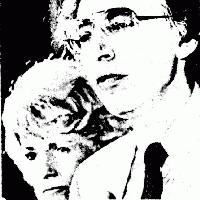 Margaret
Heckler and Robert Gallo.
Margaret
Heckler and Robert Gallo.
The false diamond robbery.
After Dr. Gallo's announcement, the French Government brought the US government to court, looking for the rights to the patent, and the vindication of having discovered the retrovirus, which was renamed HIV (Human Immuno-deficiency Virus).
The President of the USA and the French Prime Minister quickly reached an agreement: the two states would share the profits from the so-called HIV test, and Gallo and Montagnier would be considered «co-discoverers» of the retrovirus.
Later on, photos of the retrovirus were published: they were identical to those of a sample of a virus called LAV which had been given to him by Dr Luc Montagnier, the head of the Institut Pasteur's research team.
At an earlier date, in October 1982, Dr Montagnier had given him another set of samples, with a contract stating that the American laboratory could not use them for commercial purposes.
According to Dr. Sonnabend, founder of the Aids Medical Foundation, the photos could not have been identical if they did not come from samples from the same patient.
Early in 1989, John Crewsden, an investigative reporter on the Chicago Tribune, explained that Gallo supposedly took the virus sent by Dr. Montagnier to his laboratory, thus explaining how the two of them could have discovered the same virus.
On March 1 the same year, the New York Tribune reported on an internal investigation within the National Health Institute of the USA.
This investigation arrived at the conclusion that an article published by Gallo in «Science» in 1984 where he argued that HIV caused AIDS contained contradictions arising from «misrepresentations or falsifications».
The French Government demanded absolute recognition for the discovery of HIV, looking for compensation of some 20 million dollars, the value of the profits for the HIV tests. They also looked for several million dollars directly from Dr Gallo.
The US government finally accepted the virus had been stolen. The Institut Pasteur increased their patent rights to the test for the so-called HIV by 10%.
A dissident scientist: Peter Duesberg.
Peter Duesberg, a molecular biologist and member of the US National Academy of Science, and already one of the world's main experts in retrovirus, began to write articles on the so-called HIV in «Cancer Research» magazine in 1987.
In these articles, Duesberg asked several questions: How could the so-called HIV kill millions of cells if it was only capable of killing a few? How can there be AIDS sufferers with no trace of HIV? When HIV was injected into animals, why didn't they develop AIDS?
After nine months writing articles in «Cancer Research», and reading all previously published articles, Duesberg concluded that far from being mortal, this retrovirus was innocuous.
In spite of this affirmation, Duesberg prudently insisted on continuing to practice safe sex.
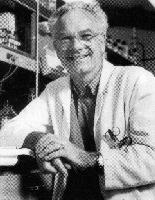 Biologist
Peter Duesberg.
Biologist
Peter Duesberg.
First came his colleagues silence. Then, his research funds were cut off: in October 1990, he was informed that his annual grant of $350,000 from the US government would be cut off at the end of 1992.
The revision committee had Dr Flossie Wong Staal on it, who had long been Gallo's lover and was mother of his two children, and Dr Dani Bolognesi, who owned another long-term patent for HIV antibodies.
Duesberg appealed without success, in spite of the initial support of some members of the government and some members of Congress such as Ron Dellums and William Dannemeyer.
It is evident that up to then the debate on the origin of AIDS had been completely suppressed. High-earning «prestigious» scientists in powerful jobs continually stated in the media that the so-called HIV was the sole cause of AIDS.
HIV-AIDS: an impossible hypothesis.
According to the theory that HIV causes AIDS, when a person is infected by HIV, it infects and kills leucocytes (white blood cells) to such an extent that the individual ends up being the victim of the so-called «opportunistic diseases».
In the face of individuals with HIV antibodies for years without developing any AIDS symptom, these virologists reinterpret the facts to fit them into their theories.
 Basic
outline of the so-called HIV retrovirus.
Basic
outline of the so-called HIV retrovirus.
They answer that the virus is in hiding, that it mutates, that it acts mysteriously.
It is obvious that these virologists never question the viral hypothesis: they are the NIH virologists, the main beneficiaries of the test patents, of organised trips, and of public and private grants.
According to Duesberg, the virus infects a cell and kills about 10,000 around it, while the human body replaces cells at a much faster rate.
Therefore, the cause or causes of AIDS should be looked for elsewhere. The badly-named HIV is one of thousands of retrovirus that can often be found in AIDS-sufferers bodies.
Unfortunately, no systematic study has been carried out to find out what factors apart from HIV cause AIDS.
There is much evidence from doctors with experience with AIDS sufferers and evidence from people belonging to support groups for these patients.
This evidence shows that people who get AIDS -such as haemophiliacs and those receiving blood- transfusions- can have many factors causing them to have poor defences, whether or not they have HIV.
Many AIDS sufferers have previously suffered from sexually transmitted diseases, along with abuse of antibiotics, drugs or immuno-suppressors.
The terror from the Third World.
In 1989, Phillipe and Evelyne Kryan, who were in charge of a medical aid organisation with 230 employees in Kagera, Tanzania, reported on AIDS in Africa for the first time.
They released an illustrated report, laying out a dreadful future for Africa as a result of the possible AIDS epidemic.
This report was well distributed and exaggerated upon in the US press.
For instance, in March 1992, the Washington Post wrote that the African continent was undergoing «a public health disaster of enormous magnitude», and that Kagera was «one of the hardest hit regions in the world».
According to the newspaper, Phillipe Kryan stated: «we would have been better off with an earthquake» than the AIDS epidemic, because it affected the most productive group, precisely the most active sexually.
On October 3, 1993, the Sunday Times published a long article by its scientific reporter, Neville Hodgkinson.
Now, the article quoted Phillipe Kryan, after four years of experience with African patients: «There is no AIDS. It is an invention. There is no epidemiological basis for this. It doesn't exist for us.»
However, the Washington Post did not mention this change of opinion. Only The Guardian and to some extent The Sunday Times of London took part in the debate, the latter with an essay of Simon Jenkins'.
The British Scientific establishment's main argument against Hodgkinson was an unpublished study done by the Medical Research Council, and released at a press conference in June 1993.
This study stated that there was a higher death rate among Ugandan farmers who showed positive in the so-called HIV test than among the others. However, of the 64 deaths used in the study by the MRC, only five were diagnosed as having died from AIDS.
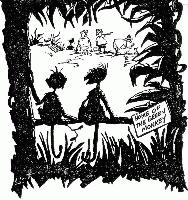
Poster: HOUSE OF THE GREEN MONKEY.
-Here we have again the CDC people with their HIV testing devices-.
-These idiots humans are ready to do anything to get the grants
money-.
In reply to a question by Neville Hodgkinson at this very press conference as to whether these farmers had died from AIDS, he was told something along the lines of «not exactly».
At an international conference on AIDS held in Yokahama in August 1994, where much of the pharmaceutical industry involved in producing AIDS drugs were touting their products, the number of diseases considered to be caused by AIDS was increased.
As a result of this change, the number of possible AIDS victims in Asia had to be considered increased, in accordance with their calculations.
In December 1994, at another international conference on AIDS in Morocco, attended by scientists and governments, the WHO's officials stated that the number of those infected by HIV in Africa had reached 1.5 million in 1993 and 10 million in 1994.
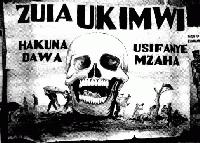 AIDS
publicity in Tanzania.
AIDS
publicity in Tanzania.
After visiting Nigeria, Cameroon and Gabon, Harvey Bialy -doctorate in molecular biology, and director of «Biotechnology» magazine- stated that contagious AIDS does not exist in Africa. He complained that non-rigorous epidemiologists were presenting typical diseases of malnutrition as AIDS.
The dissidents become organised.
At the San Francisco International Conference on AIDS, in 1990, Dr Luc Montagnier rectified and announced that the so-called HIV could not cause AIDS without a co-factor, such as microplasms -small bacteria that turn aggressive as a result of antibiotics-.
This declaration caused anger among part of his audience and some of his North American colleagues. He had to leave hurriedly by plane for his country.
In 1993, some 40 scientists -retrovirologists, epidemiologists and immunologists among them- came together to form the Group for the reconsideration of the HIV-AIDS theory. This group was formed as a result of a refusal to publish the following letter on the part of all those scientific journals asked to:
«The public in general believe that a retrovirus called HIV causes the group of illnesses known as AIDS. Many biochemists now doubt this hypothesis. We propose that a suitable independent group direct a reevaluation in the light of the evidence that exists for and against this theory. Furthermore, we propose that critical epidemiological studies be designed and carried out.»
This group has published a periodical, first called «Rethinking AIDS», and now «Reappraising AIDS». Some time after the groups' creation, there were some 400 critical scientists in it.

The conference in Sant Cugat del Vallès.
Already in December 1993, the «Associació de Medicines Complementàries» had organised a conference in Sant Cugat del Vallès, where several of these scientists, all critical of the official line on HIV-AIDS, took part.
Dr. Peter Duesberg, Dr. Harvey Bialy, both mentioned above, and Robert Laarhoven, coordinator of AIDS research in Holland and Joan Shenton, manager of the medical videos company MEDITEL were some of those taking part.
This last company, MEDITEL, has been in a position to publicise the critical scientists' opinions, especially through five hours of programming on the British Channel 4.
The conference organisers sent a document entitled «Re-plantejar la SIDA» (Reconsidering AIDS) to more than 600 media in Spain. It was published in «Cuerpomente» among others.
On the other hand, none of the media present at the conference, nor any Catalan nor Spanish TV channel reported on this meeting. Neither have they reported on any of the critics' opinions at any stage.
Treatments and survivors.
The majority of those infected by AIDS who have survived did so with great willpower and critical sense, adopting a responsible life-style.
In London, the survivors edit a magazine, «Continuum». There is the Foundation for Alternative AIDS Research in Holland (SAAO).
Regardless of its origin, immuno- deficiency can be treated by many ecologically-produced, inexpensive methods. Some researchers and doctors use remedies for immuno-deficiency based on the curative properties of plants.
Chinese medicine, for instance, being free from the pressure of western pharmaceutical companies, have continued to study and treat with their immuno-stimulant plants, following a tradition 22,000 years old.
Meanwhile, there are many Mediterranean plants threatened with extinction without ever having been studied for medical properties. And yet, some people are very keen for Barcelona to become the headquarters of the European Agency of Medicine. What a joke!
Toxic treatments for AIDS.
The first results of the Franco-british study, Concorde, were made public on April 1, 1994.
This study compared the results of AZT for 1,800 individuals presumed to be HIV carriers and without any symptoms of AIDS. Half of them were treated with the drug.
In the conclusions, it was stated that the appearance of AIDS symptoms was in no way retarded by AZT, but that more deaths occurred in those that took it than those who did not.
However, there were other effects: tumours caused, anaemia, transfusions received -which reduce defences- and the reduction in the quality of life.

As a result of this, the association Project A.I.D.S. was set up in Los Angeles, which started legal action against those in charge of approving AZT for use in the USA. SCAM, a committee to investigate and publish the affairs of Wellcome Foundation and AZT was set up in London. The English Lawyer Graham Ross is planning an international group for legal action against the Wellcome Foundation, which will include Spain.
The Wellcome Foundation invited 20 representatives of the Spanish media from April 14-17 1994, to stay in the five-star Hotel Grafton in London, whose costs rose to some 14 million pts.
To see the reason, let us look at what happened some days later...
Kary Mullis and manipulation of news in action.
Dr Kary Mullis received the Nobel Prize for chemistry in 1993 for discovering the latest technique to study viruses: PCR or Polymerase Chain Reaction.
PCR is a tool to multiply anything at all, regardless of how small it may be, including HIV, including DNA, if one has the equipment needed to analyse it.
When PCR was first used in 1989 to detect the so-called HIV, some researchers affirmed that Duesberg's statement that HIV could not be found in AIDS patients would no longer stand.
The 28th International Meeting of the European Society for Clinical Research was held in Toledo from April 21-23 1993. More than 1,000 scientists were present, and it was subsidised by the pharmaceutical multinationals.
During his speech, Kary Mullis changed the subject, and stated that he didn't believe that HIV caused AIDS. Many of the audience were dumb-struck, and some walked out of the hall before he finished.
Strangely, of the written Spanish media present who wrote up the conference (ABC, El Mundo, El País, Ya, etc.), none paid much attention to the content of his speech.
On the other hand, there were headlines, full pages and long comments criticising or ridiculing his declarations. No more than 60 words of Mullis' opinions, presented as if they lacked all basis.
Later, an AIDS patient, and a carrier of the wrongly-named HIV, survivors and dissidents from the official theory, interviewed Kary Mullis.
«The mystery surrounding this accursed virus has been generated by the two billion spent annually on it. Choose another virus, spend two billion, and you can create great mysteries about it».
In collaboration with Alfredo Embid Fonfria,
Coordinator of la Asociación
de Medicinas Complementarias.
General information
Asociación de Medicinas
Complementarias (A.M.C.).
Reappraising AIDS: 4622 Santa Fe St., San Diego, Ca 92109, USA. Tel: 619-272-3884 Fax: 629-272-1621.
More information of economic interests behind AIDS
Bryan Ellison: «Inventing the AIDS epidemic».
Slingshot Publications: «Dirty Medicine». Bm Box 8314, London WC1N 3XX England.
Graham Ross, J. Keith Park & Co., 161 Banks Road, West Birby, Wirral, Merseyside, Liverpool. L483HU, Inglaterra. Tel.: 011-44-051-227-2552.
More information on official treatments
SCAM; BCM 7000, London WC1N 3XX. England.
More information on survivors evidence